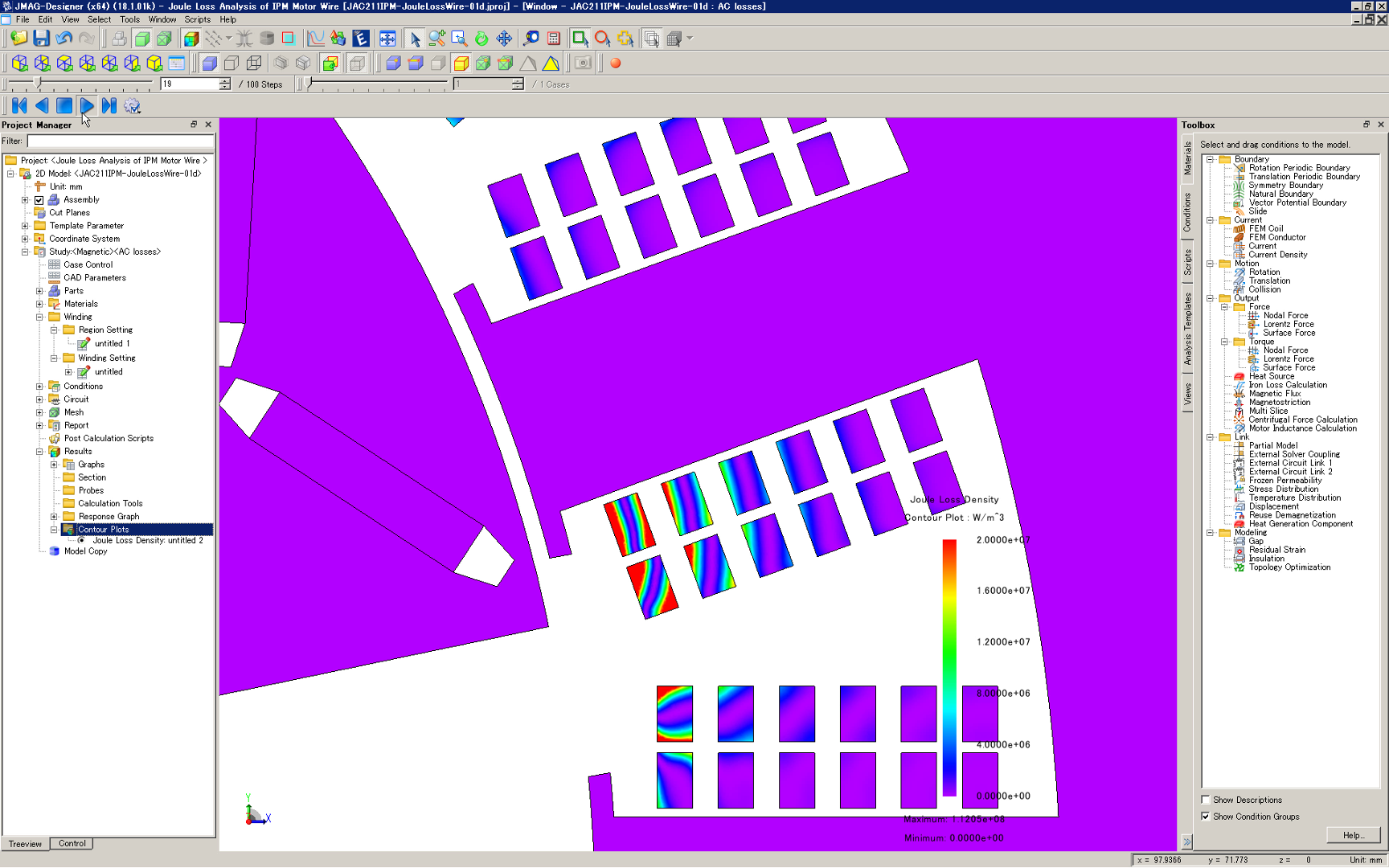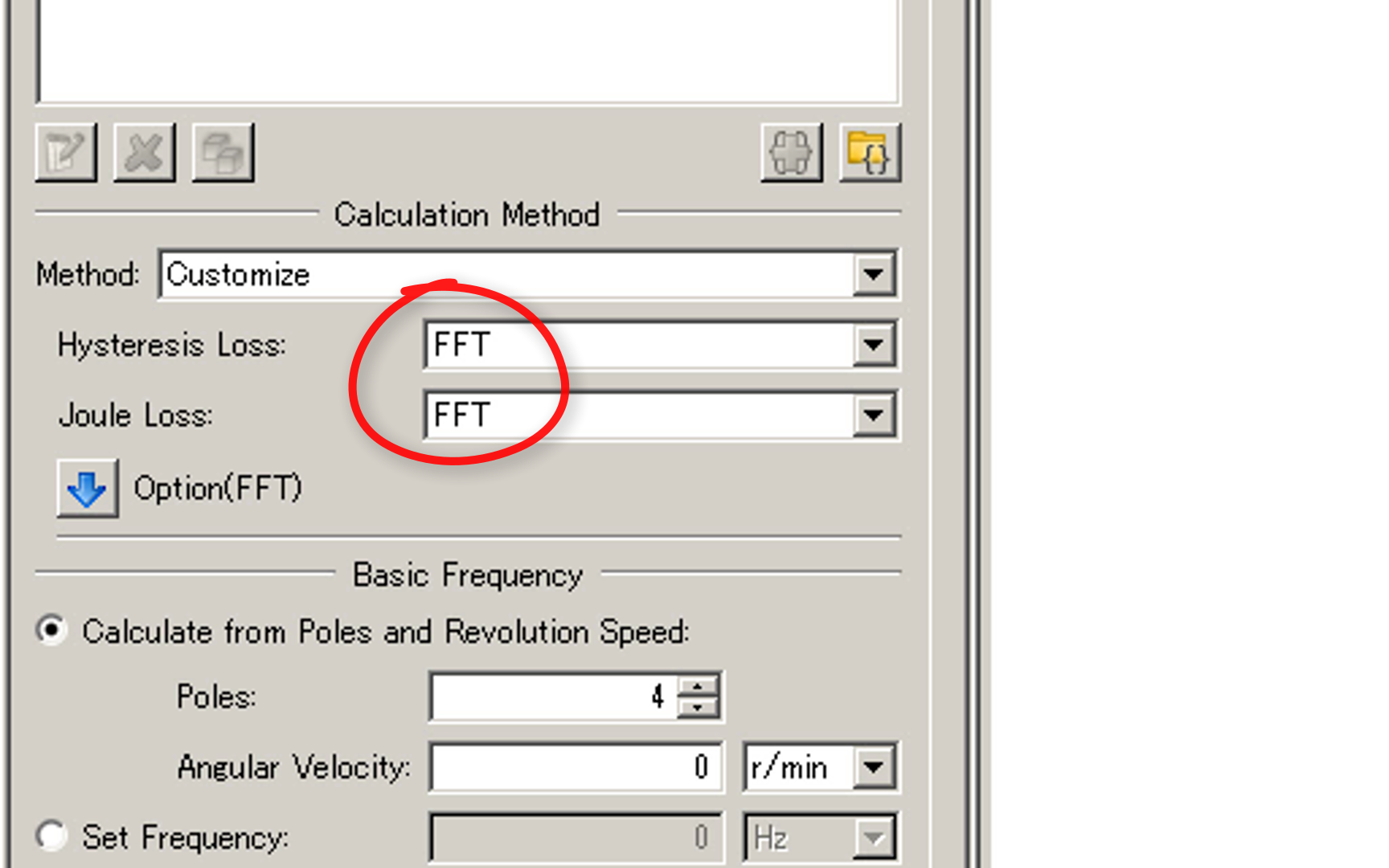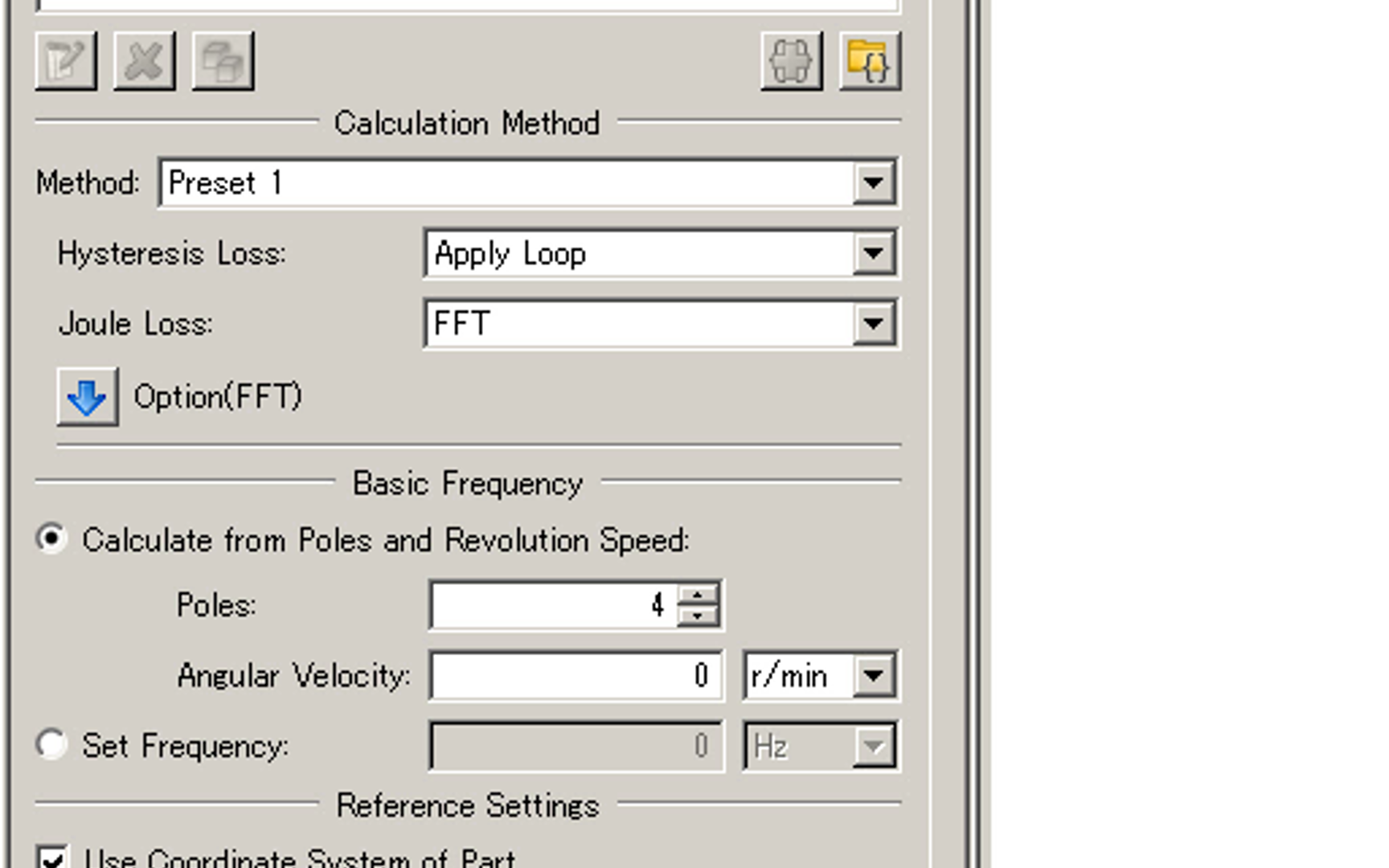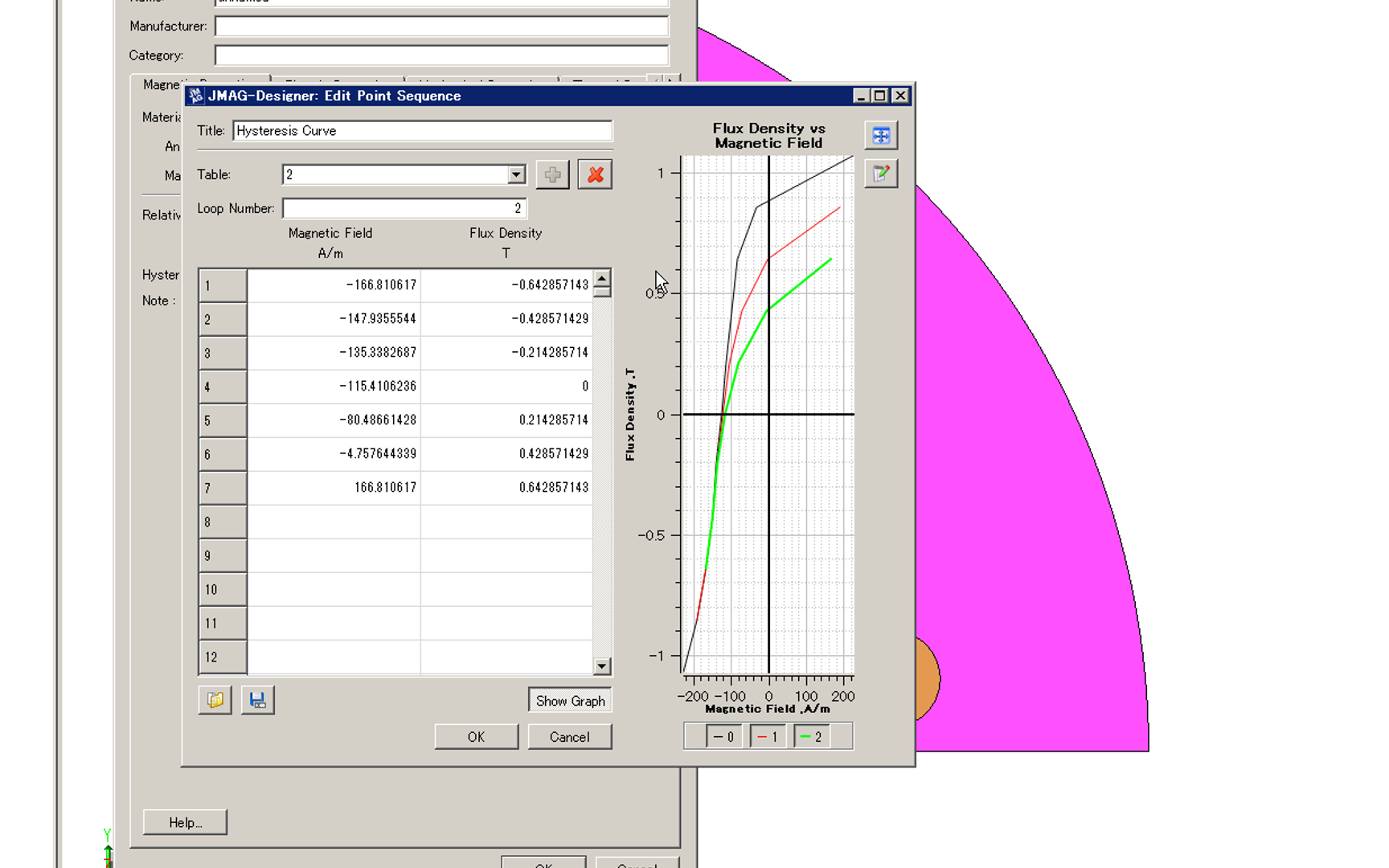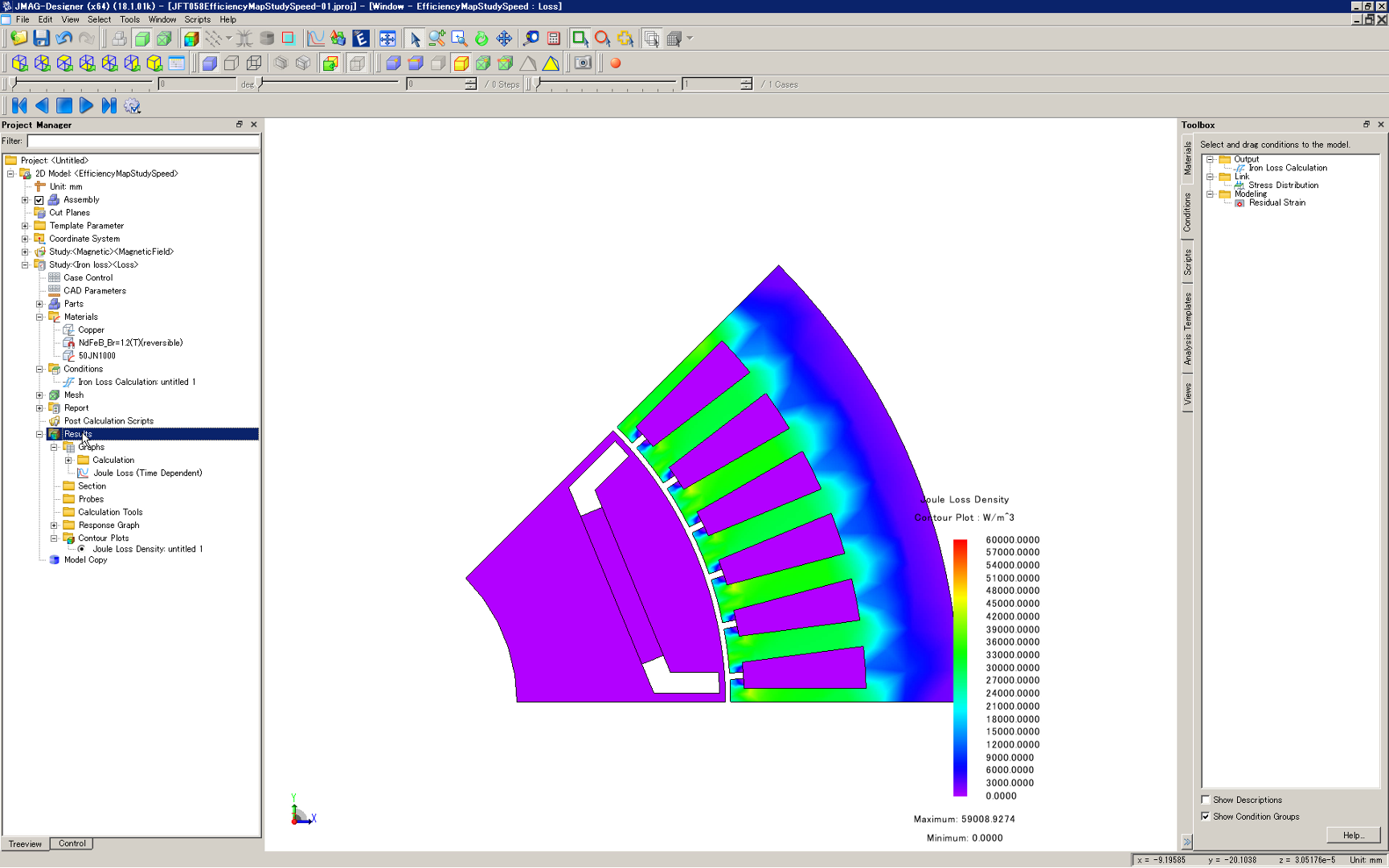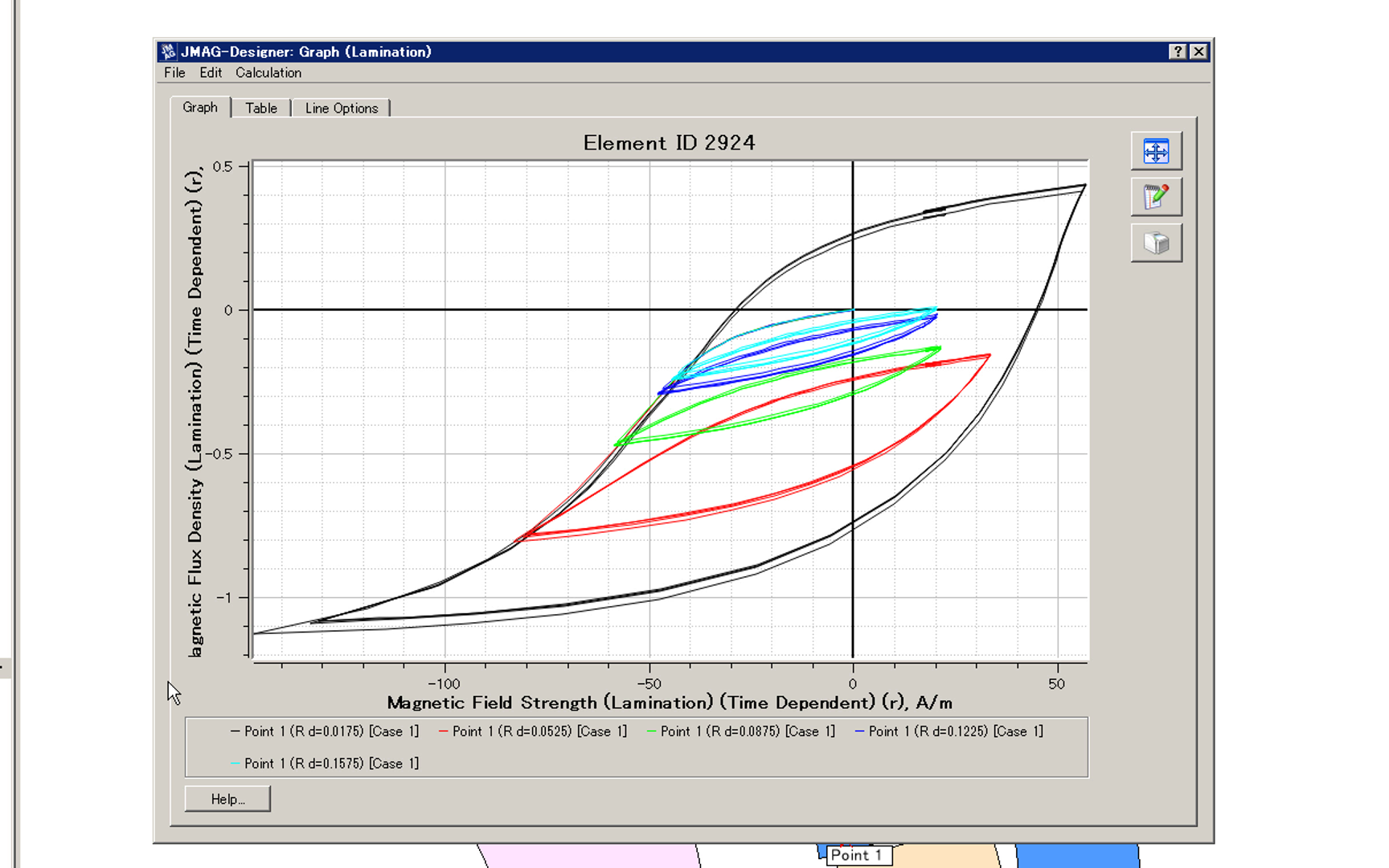Overview
| Organizer | POWERSYS |
|---|---|
| Dates | July 16 (Tuesday), 2019 |
| Location |
Powersys America | Michigan office 2791 Research Dr Rochester Hills, MI 48309 USA GOOGLE MAPS |
| URL | http://events.powersys-solutions.com/jmag-michigan-user-conference-2019/ |
Tutorial Video
2.45 pm – 4.15 pm : High fidelity modeling for accurate loss predictions – Manufacturing effects, Excess loss, AC loss.
Program
| Time | Content |
|---|---|
| 08:30-09:00 | Meet & Greet / Attendee registration |
| 09:00-09:30 | Introduction, Powersys team |
| 09:30-10:15 |
Development roadmap of JMAG, Dr Takashi YAMADA, JSOL Corporation JMAG is constantly being worked on to achieve highly accurate and high-speed simulation. JSOL would like to share our progress from the past year including parallel solvers to accelerate speed as well as GUI improvements aiming for increased productivity of analysis workflow. Analysis technologies we are currently focusing on and our plans for incorporation will also be covered in this presentation. Design exploration is an important topic this year. This presentation will detail the present and future of JMAG. |
| 10:15-10:30 | Coffee break |
| 10:30-11:15 |
Automotive application of JMAG for electric motor design and analysis, Jihyun KIM, General Motors Torque and Power density, efficiency, NVH, durability, thermal and cost are major considerations to design traction motors for EV and HEV application. Finite element analysis (FEA) is widely used to design traction motors due to high fidelity, and optimizations are utilized to solve the complex problems under high performance computing (HPC). In this presentation, an optimization example using Jmag optimizer with an parametric model to minimize torque ripple will be presented. In addition, demagnetization analysis, HPC scalability, 3D endturn winding tool will be introduced to perform FEA using JMAG. |
| 11:15-12:00 |
Radial Force Shaping for Acoustic Noise Reduction in Switched Reluctance Machines, Berker BILGIN, Mc Master University Robustness, simple construction, and low cost are some of the advantages of switched reluctance machines (SRMs). These are all desirable characteristics of an electric motor, especially in the automotive sector, where high-temperature and high-speed operation, and low-cost are always in demand. However, the acoustic noise generation by conventionally controlled SRMs can prevent its use in applications where acoustic comfort is required. Acoustic noise is radiated by the stator frame when a vibration mode is excited by the respective spatial order at a forcing frequency that is close to the stator’s modal natural frequency. The excitation surface wave is the radial force density waveform, which is a function of time and spatial position. In this presentation, a phase radial force shaping method is presented by using harmonic content analysis. A generic function for the radial force shape is identified, whose parameters are calculated by an optimization algorithm to minimize the torque ripple for a given average torque. From the phase radial force profile, a current reference is obtained. The proposed methodology is experimentally validated with a four-phase 8/6 SRM through acoustic noise measurements at different speed and load conditions. |
| 12:00-13:15 | Banquet buffet |
| 13:15-14:00 |
Design and simulation of variable flux permanent magnet motors using JMAG, Maged IBRAHIM, National Research Council Variable flux permanent magnet synchronous motors (PMSMs) are considered promising alternative to rare-earth PMSMs, as they utilize lower cost magnets and can achieve improved efficiency at high speeds. A variable flux PMSM is designed using JMAG so that the low-coercive field magnets can maintain their magnetization state at high torque-low speed conditions, while at high speeds the magnets can be partially demagnetized by armature current pulses to reduce the required field weakening current, thus achieving high efficiency throughout a wide speed range. A motor prototype is fabricated and tested to confirm the FEA results. In addition, the potential of additive manufacturing in the design of advanced motor technologies will be presented. |
| 14:00-14:45 |
Design of an External-Rotor Direct Drive E-Bike Switched Reluctance Motor. Dr. Brock HOWEY, Mc Master University In this presentation, the design of an exterior-rotor direct-drive electric bicycle (E-Bike) switched reluctance motor will be presented based on the performance parameters and dimensional constraints of a commercially available permanent magnet e-bike motor. The dynamic-current efficiency maps for different rotor pole configurations are compared for a 3-phase SRM with 12 stator poles. During the design process, several design parameters have been evaluated and their effects have been investigated. The final design characteristics of the 12/16 SRM e-bike motor are validated experimentally. |
| 14:45-15:30 |
High fidelity modeling for accurate loss predictions – Manufacturing effects, Excess loss, AC loss. (Session 1), Nicolas SCHNEIDER & Hiroyuki SANO, JSOL Manufacturing processes such as Punching and Press fit effects the performance of the steel laminations. These effects are typically ignored or a rough estimation is taken into account in FEA analysis because of the complexity involved in capturing the phenomenon. But on the other hand there increasing demand in accurate loss prediction in advanced machine development where excess loss and stray loss calculation accuracy becomes necessary and important. Although usual FEA models may miss enough fidelity, JSOL has been constantly developing modelling techniques to address the complex phenomena of losses and equipped JMAG with newly developed functions for accurate Loss Predictions. The topic covers a detailed explanation of the theoretical background of these functions along with some application examples. |
| 15:30-15:45 | Coffee break |
| 15:45-16:15 |
High fidelity modeling for accurate loss predictions – Manufacturing effects, Excess loss, AC loss. (Session 2), Nicolas SCHNEIDER & Hiroyuki SANO, JSOL Manufacturing processes such as Punching and Press fit effects the performance of the steel laminations. These effects are typically ignored or a rough estimation is taken into account in FEA analysis because of the complexity involved in capturing the phenomenon. But on the other hand there increasing demand in accurate loss prediction in advanced machine development where excess loss and stray loss calculation accuracy becomes necessary and important. Although usual FEA models may miss enough fidelity, JSOL has been constantly developing modelling techniques to address the complex phenomena of losses and equipped JMAG with newly developed functions for accurate Loss Predictions. The topic covers a detailed explanation of the theoretical background of these functions along with some application examples. |
| 16:15-17:00 | Optimization demonstration held by Powersys’ technical experts team |
| 17:00- | Open Q&A | Opening of the cocktail Area |
Contact
POWERSYS
TEL: +33 (0)4 42 61 02 29
E-mail: marketing@powersys.fr

